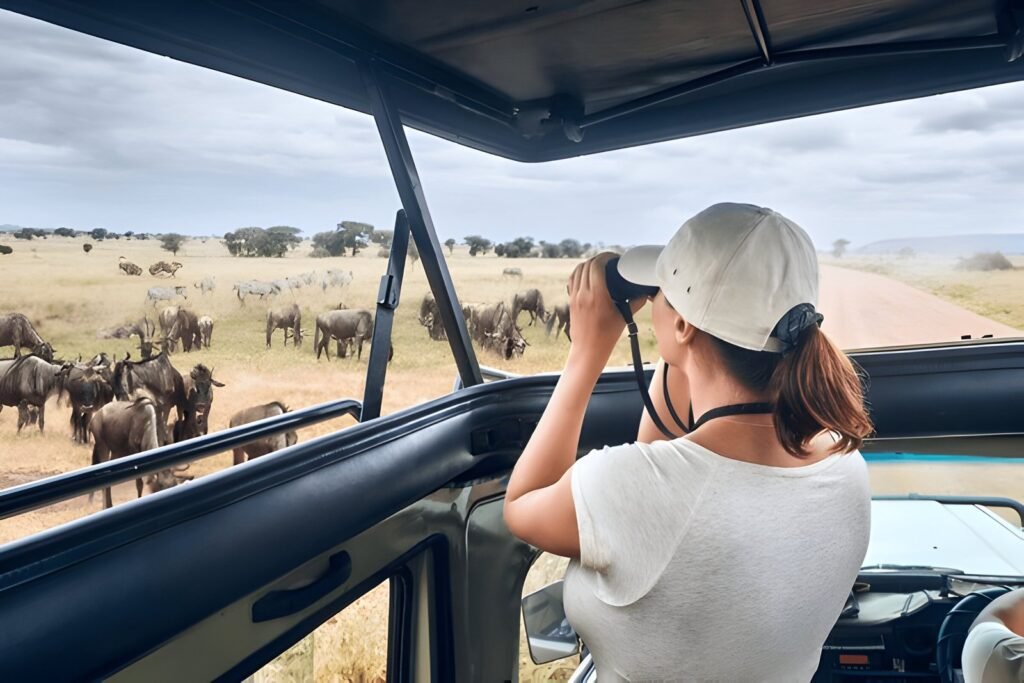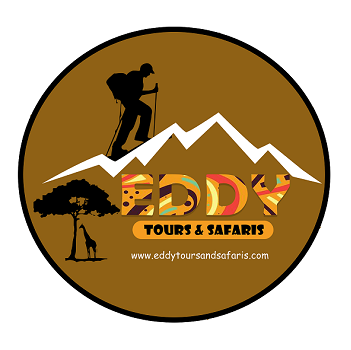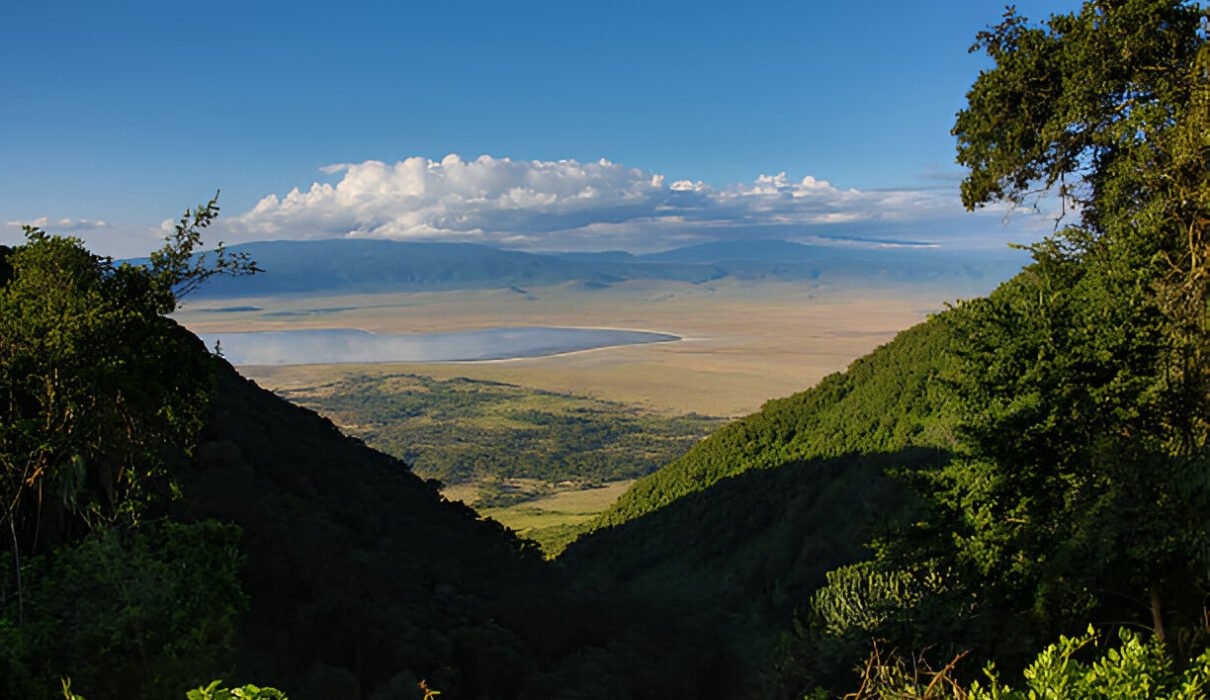Tanzania Safari Packages in January, February, and March 2025 & 2026. Looking for the perfect wildlife adventure in the heart of Africa? Tanzania safari packages in January, February, and March 2025 & 2026 offer the best opportunities to witness Tanzania’s amazing wildlife and scenic landscapes. These months fall within the dry season, making it an ideal time to visit the country’s top national parks, including the Serengeti, Ngorongoro Crater, and Tarangire. If you’re planning a family trip or solo adventure, Tanzania offers rich experiences for everyone.
January to March is a great time to witness the calving season of the Great Migration. Thousands of wildebeest and zebras give birth on the Southern Serengeti plains, attracting predators and creating incredible safari moments.

Tanzania Safari Packages in January, February, and March 2025 & 2026 :- Why Visit Tanzania in January, February, and March?
Tanzania’s climate and wildlife activity make these months an excellent time to book a safari. Here are some reasons to consider traveling during this period.
1. Calving Season in the Serengeti
During the early months of the year, the Southern Serengeti becomes the birthing ground for wildebeest and zebras. It’s an incredible spectacle, with about 8,000 calves born every day during peak season.
- Witness the miracle of life and the predator-prey drama up close.
- The vast Serengeti plains are greener and more picturesque due to the short rains in November and December.
Learn more about the Serengeti National Park at Tanzania National Parks.
2. Best Time for Birdwatching
January through March is also a peak time for birdwatching in Tanzania. Migratory birds from Europe and Asia join the resident species, making it a paradise for bird lovers.
- Birdwatchers can spot over 500 species in parks like Tarangire and Lake Manyara.
- Vibrant colors and mating displays make this an exciting time for birding enthusiasts.
For more birdwatching insights, visit BirdLife International.
3. Fewer Crowds and Comfortable Weather
While July through October sees the largest number of tourists, the period from January to March offers a more relaxed safari experience with fewer visitors. The weather is warm, and game viewing is excellent.
- Enjoy cooler mornings and warm, sunny afternoons.
- Benefit from smaller crowds, allowing for a more intimate experience with nature.
For up-to-date weather forecasts, check out Tanzania Meteorological Agency.
Top Tanzania Safari Packages for January, February, and March
There are several safari packages to choose from that cater to different interests and budgets. Whether you’re looking for a luxury experience or a budget-friendly adventure, Tanzania has a range of options.
1. Serengeti Calving Season Safari
The Serengeti calving safari focuses on the Southern Serengeti plains where wildebeest give birth during January and February. This package is perfect for witnessing the new generation of wildlife, along with the intense predator action that follows.
- Duration: 7–10 days
- Highlights: Great Migration calving, predator action, game drives
Learn more about this package at Serengeti National Park Guide.
2. Ngorongoro Crater Safari
For those who want to visit one of the most iconic safari destinations in the world, the Ngorongoro Crater safari is a great option. The crater floor provides excellent game viewing opportunities year-round, but January through March offers cooler temperatures and an active wildlife population.
- Duration: 4–6 days
- Highlights: Big Five sightings, stunning landscapes, Maasai cultural tours
Discover more about the Ngorongoro Conservation Area at Tanzania’s Wildlife Authority.
3. Tarangire National Park Safari
January through March is a wonderful time to visit Tarangire National Park, known for its large elephant herds and ancient baobab trees. This park also attracts numerous bird species during the rainy season.
- Duration: 3–5 days
- Highlights: Elephant herds, birdwatching, scenic landscapes
For more information, check out the Tarangire National Park details at African Wildlife Foundation.
4. Kilimanjaro Trek and Safari
For those seeking both adventure and wildlife, combining a Kilimanjaro trek with a safari is the perfect package. You can summit Africa’s highest peak and then enjoy game drives through the Serengeti or Ngorongoro.
- Duration: 10–14 days
- Highlights: Mount Kilimanjaro trek, wildlife safaris, cultural experiences
To plan your Kilimanjaro climb, visit Kilimanjaro Climb Specialist.
Tanzania Safari Packages in January, February, and March 2025 & 2026 : Wildlife You Can Expect to See on a January–March Safari
Tanzania is renowned for its rich wildlife diversity. Here’s a quick look at what you can expect to see on a safari during these months.
1. The Big Five
The Big Five—lions, leopards, elephants, buffalo, and rhinos—are a major draw for tourists. They can be spotted in parks like the Serengeti, Ngorongoro Crater, and Tarangire.
2. Wildebeest and Zebras
During January through March, the wildebeest migration is in its calving phase. Large herds of wildebeest, zebras, and gazelles are abundant in the Southern Serengeti.
3. Predators (Lions, Cheetahs, and Hyenas)
With the influx of young wildebeest calves, predators like lions, cheetahs, and hyenas are extremely active, offering incredible opportunities for close-up predator sightings.
4. Birdlife
Over 500 species of birds can be seen in Tanzania during this season, including migratory species like the Eurasian Roller and Northern Wheatear.
To learn more about Tanzania’s incredible biodiversity, visit WWF Tanzania.
Tanzania Safari Packages in January, February, and March 2025 & 2026 :- What to Pack for Your January–March Safari in Tanzania
When traveling to Tanzania for a safari, it’s important to pack appropriately for the weather and safari conditions. Here are some essentials:
1. Light, Breathable Clothing
Temperatures are warm, so pack lightweight clothing for daytime game drives. Neutral colors like khaki or olive are recommended to blend in with the environment.
2. Warm Layers
Evenings and early mornings can be cooler, especially at higher altitudes like the Ngorongoro Crater, so pack warm layers such as a fleece jacket.
3. Binoculars and Cameras
Make sure to bring a good pair of binoculars for birdwatching and a camera to capture those once-in-a-lifetime wildlife moments.
For a more detailed packing list, visit Safari Guide Africa.

Tanzania Safari Packages in January, February, and March 2025 & 2026 : FAQs
1. Is January a good time to visit Tanzania for a safari?
Yes, January is an excellent time to visit as it marks the beginning of the calving season in the Serengeti, offering spectacular wildlife viewing opportunities.
2. What animals can I expect to see in February?
In February, you can expect to see the Big Five, wildebeest herds, zebras, predators like lions and cheetahs, and a variety of bird species.
3. How is the weather in Tanzania during March?
March is the beginning of the long rains, but it still offers good wildlife viewing. The landscape is lush, and there are fewer tourists, providing a more private safari experience.
4. Which parks are best to visit during these months?
The best parks to visit in January through March include the Serengeti, Ngorongoro Crater, and Tarangire National Park.
5. Can I climb Kilimanjaro during these months?
Yes, January and February are some of the best months to climb Kilimanjaro, with clear skies and moderate weather.
For more information on climbing Kilimanjaro, visit Kilimanjaro Climb Specialist.
6. What is the Great Migration, and can I see it in January?
The Great Migration is the movement of over a million wildebeest and other grazing animals across the Serengeti. In January, you can witness the calving season, where thousands of calves are born daily.
Tanzania Safari Packages in January, February, and March 2025 & 2026 :- Ready to Book Your Tanzania Safari?
If you’re ready to experience the best of Tanzania’s wildlife in January, February, or March, it’s time to book your safari package. For expert-guided tours and custom packages, visit Eddy Tours and Safaris. You can also prepare for your Kilimanjaro trek with Kilimanjaro Climb Specialist.

